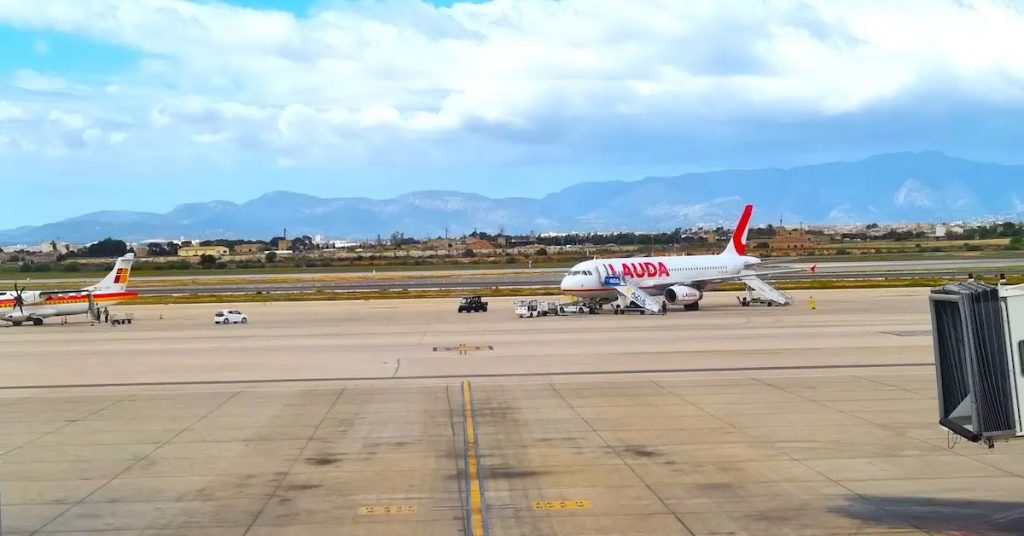Ryanair has raised concerns over disruptions at Palma airport following adverse weather conditions. These disruptions occurred during the start of a public holiday weekend in Spain.
The airline attributed this chaos to alleged ineffective decisions by the Spanish air traffic control, supposedly blocking inbound flights without sufficient weather justification.
Challenges Faced at Palma Airport
According to Ryanair, an “extreme weather phenomenon” led to substantial delays and cancellations at Palma Airport. These disruptions coincided with the onset of a widely observed public holiday in Spain, magnifying the impact on passengers and airport operations.
While the adverse conditions were publicly acknowledged by the Spanish Meteorological Agency (Aemet) through a red alert, indicating risks of heavy rain and storms, Ryanair contended that the airport’s decisions exacerbated the situation unnecessarily.
Ryanair’s Response to the Disruption
The airline issued an apology to its passengers affected by what it called “excessive delays and cancellations.” Ryanair claimed that, unlike outbound flights which were operating, inbound aircraft were unjustly blocked from landing.
Neal McMahon, Chief Operations Officer at Ryanair, condemned the actions of the Spanish air traffic control, asserting that there were no actual weather issues justifying the blockade of incoming flights.
Meteorological Context of the Weather Phenomenon
The disruptions have been attributed to DANA, short for ‘Depresión Aislada en Niveles Altos.’ This meteorological event involves cold air isolated at high altitudes, leading to severe weather changes when it meets warmer air.
Majorca is particularly susceptible to these conditions, especially in late summer and autumn, where the combination of descending cold air and warm Mediterranean moisture can result in intense rainfall and thunderstorms.
These volatile conditions can lead to sudden weather shifts, causing substantial rainfall over a short period, triggering flooding and interruptions in flight operations.
The Broader Impact on Air Traffic Operations
The upheaval at Palma airport was not isolated, as other airlines also experienced delays due to congested air traffic amid the challenging weather across Europe. Airports continuously strive to adapt their operations in real-time during such weather events.
In response, Jet2.com had pre-emptively warned passengers of possible delays, highlighting the widespread nature of the disturbances which complicated European airspace management.
Ryanair’s Appeal for Structural Reforms
Ryanair has repeatedly called on European authorities, including Ursula von der Leyen, President of the European Commission, to reform air traffic control services. The airline argues that current inefficiencies lead to avoidable disruptions.
Such reforms are critical, especially during peak travel seasons, to ensure that passenger journeys remain smooth despite adverse conditions.
Effective management and communication between airline operators and air traffic control can dramatically alleviate the impact of sudden weather changes.
Conversations with Spanish Authorities
Ryanair has expressed difficulties in reaching the head of Spanish air traffic control to overturn what it deems a ‘nonsensical decision.’ The airline has sought an official explanation from Spain’s transport minister concerning these operational choices.
The dialogue between Ryanair and Spanish authorities underscores the complexities faced by airlines operating in unpredictable weather conditions.
Collaborative efforts and transparent communication channels between stakeholders could help in better managing such disruptions going forward.
Looking Ahead: Mitigating Future Disruptions
This incident at Palma airport highlights the need for effective strategies to manage weather-induced disruptions. Airlines must equip themselves with contingency plans to minimise passenger inconvenience.
Collaboration between meteorological agencies and aviation authorities is essential for preemptive action, ensuring passenger safety and the smooth operation of flight schedules.
In conclusion, the disruption at Palma airport illustrates the need for reform and better contingency planning in aviation management. As adverse weather becomes more frequent, effective communication and coordination among stakeholders will be pivotal in maintaining service efficiency and passenger satisfaction.

